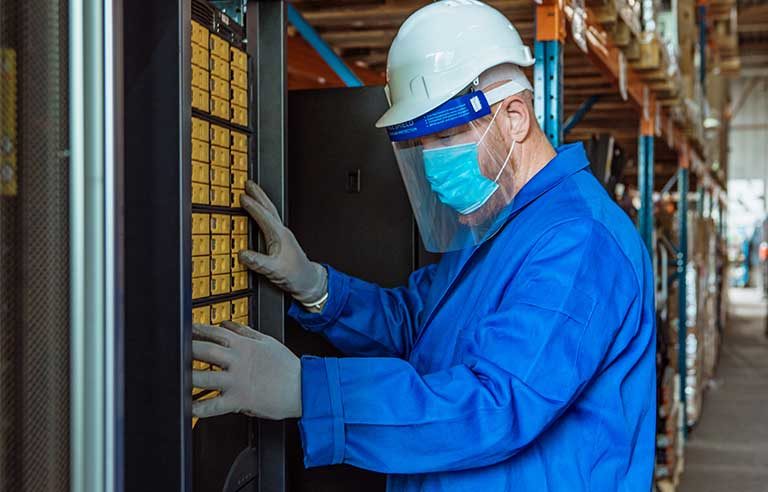COVID-19 pandemic: Washington L&I releases guidance for food processing, warehouse workers

Tumwater, WA — A new fact sheet from the Washington State Department of Labor & Industries is aimed at helping food processing and warehouse employers protect their workers from exposure to COVID-19.
The document outlines tips for implementing effective physical distancing and handwashing plans, as well as ways to increase cleaning and sanitization of frequently touched surfaces, ensure sick workers don’t report to work, and provide hazard education to workers in their preferred language.
To ensure proper physical distancing of at least 6 feet between co-workers is achieved, employers should:
- Stagger work schedules, as well as breaks and lunchtimes.
- Extend production lines to allow workers to spread farther apart.
- Use colored adhesive tape or chalk to temporarily mark 6-foot increments on the ground or processing floor.
- Appoint safety monitors to ensure physical distancing requirements are upheld.
When strict physical distancing isn’t feasible for certain tasks, employers should enact other engineering or administrative controls such as providing physical barriers or using negative pressure ventilation.
To promote proper handwashing:
- Install hand sanitizer stations near entrances and key locations.
- Educate workers on proper handwashing protocol.
- Require frequent handwashing, especially when arriving at work and after eating, taking breaks, or contacting a surface or tool touched by others.
Other tips:
- Designate sanitation workers to clean and disinfect surfaces on a “significantly increased schedule,” and ensure workers use proper personal protective equipment when working or performing cleaning tasks.
- Be familiar with COVID-19 symptoms (fever or chills, cough, shortness of breath or difficulty breathing, fatigue, muscle or body aches, headache, new loss of taste or smell, sore throat, congestion or runny nose, nausea or vomiting, and diarrhea), monitor workers for signs of illness and require sick workers to stay home.
- Communicate safety messages and updates on a daily basis.
Should a worker contract COVID-19, Washington L&I encourages employers to coordinate with local health officials to provide a timely and appropriate response.
Post a comment to this article
Safety+Health welcomes comments that promote respectful dialogue. Please stay on topic. Comments that contain personal attacks, profanity or abusive language – or those aggressively promoting products or services – will be removed. We reserve the right to determine which comments violate our comment policy. (Anonymous comments are welcome; merely skip the “name” field in the comment box. An email address is required but will not be included with your comment.)

